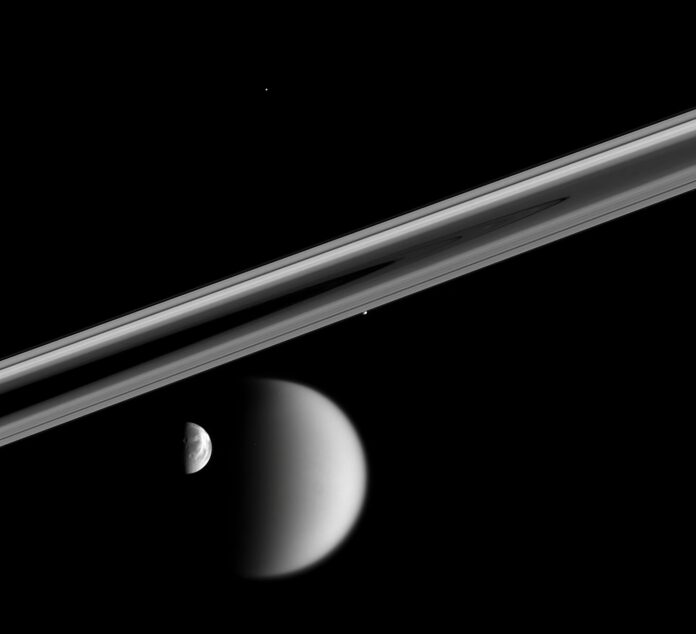
Demystifying the Abundant Moons of Saturn
While Jupiter often gets the title of ‘Moon King’, astronomers deem this to be quite off the mark. In actuality, they have charted as many as 145 moons in orbit around Saturn, the planet famous for its rings.
Until 2019, all moons larger than three kilometers (approx. 1.8 miles) were already mapped. That year marked the beginning of scientific investigations aimed at discovering even smaller moons. The impressive Canada-France-Hawaii Telescope that sits summit of the Mauna Kea volcano in Hawaii was the tool of choice for this research. The moons were tracked over many years, enabling astronomers to affirmatively establish that those objects were genuinely orbiting the planet, hence classifying them as moons.
In total, astronomers discovered 62 ‘new’ moons. This brings Saturn’s grand total to 145 natural satellites. It remains a mystery as to why Saturn boasts so many moons, but astronomers speculate that a medium-sized moon might have shattered apart approximately 100 million years ago. The numerous small fragments from that event continue to orbit the ringed planet as moons to this day.
Saturn’s Moons in Captivating Imagery
The intriguing space photo of the week showcases a number of Saturn’s moons. The image was captured by the Cassini space probe. If you look closely, you can spot four of them: Telesto (on the top), Prometheus (close to the rings), Titan (the large one) and Rhea (in front of Titan). With a diameter of 24 kilometers (approx. 15 miles), Telesto is the smallest of the bunch. An interesting fact about Telesto: it shares the same orbit as the moon Tethy, along with Callisto. While one moon sits 60 degrees ahead of Tethy, the other one follows 60 degrees behind. Prometheus, slightly larger, is not spherical, but irregular in shape. As evident in the image, Rhea and Titan are rounded.
Peering More Closely at Rhea and Titan
Rhea, boasting a diameter of 1527 kilometers (approx. 949 miles), is Saturn’s second largest moon. While it may appear uneventful at first, appearances can be quite deceiving. Scientists detected oxygen in Rhea’s atmosphere in 2010, despite the fact that it’s less than 100 kilometers thick and quite sparse. Rhea is estimated to generate around 130 grams of oxygen per second, which is not much. Moreover, the moon displays tectonic activity, with some cracks on its surface stretching as deep as four kilometers.
The last moon in the photo, Titan, is a familiar face. This alien world bears a resemblance to Earth with its clouds, rain, dense atmosphere, rivers, lakes, and seas. However, there are key differences. Titan lacks plate tectonics, hence its surface more closely resembles that of Mars. The lakes on Titan are filled with liquid hydrocarbons such as ethane and methane. It also has a chilly temperature of -179 degrees Celsius (-290.2 degrees Fahrenheit). NASA plans to send a drone, the Dragonfly, to Titan in the future. This ‘Dragonfly’ is expected to land on Titan in 2034, where it will traverse a distance of more than 175 kilometers (approx. 109 miles). This ambitious project may hopefully shed more light on this enigmatic moon.
If you’re intrigued by Cassini’s space photos, don’t hesitate to check out the forty most stunning images of Saturn and its moons.











